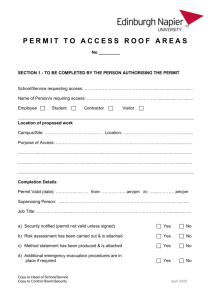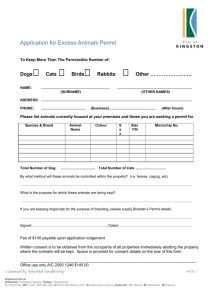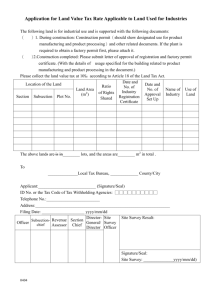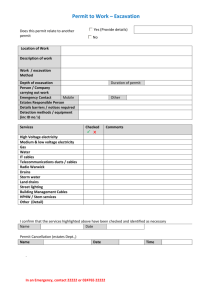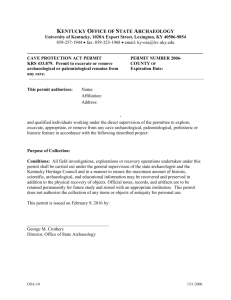VMBSG Critique of Maddocks Legal Advice
advertisement
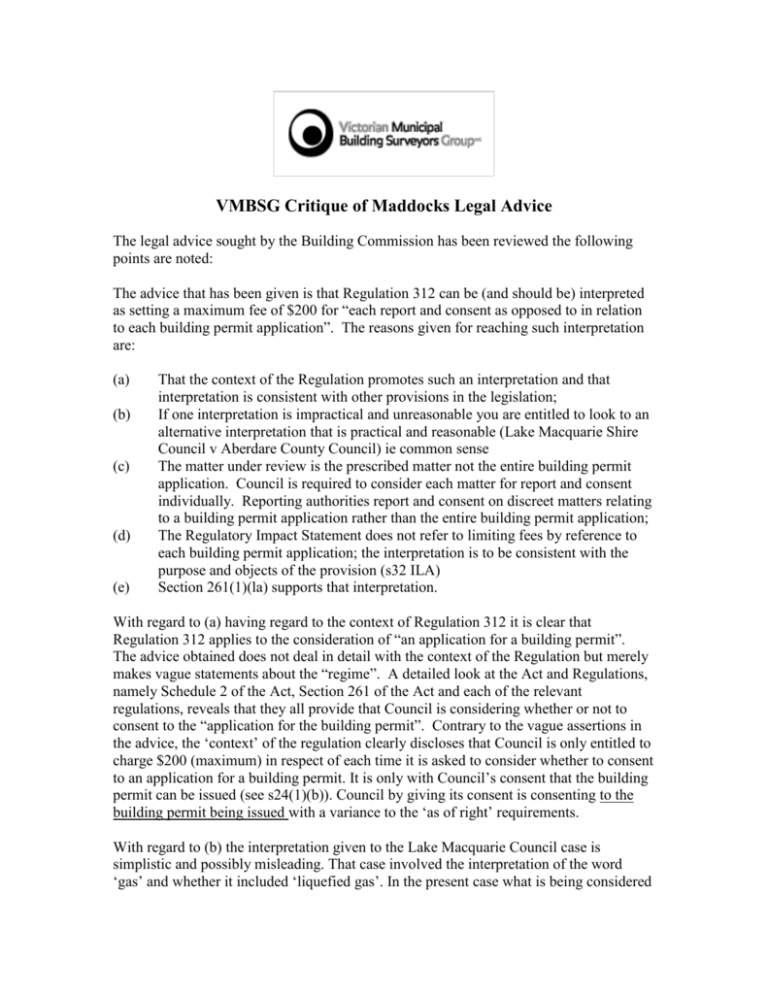
VMBSG Critique of Maddocks Legal Advice The legal advice sought by the Building Commission has been reviewed the following points are noted: The advice that has been given is that Regulation 312 can be (and should be) interpreted as setting a maximum fee of $200 for “each report and consent as opposed to in relation to each building permit application”. The reasons given for reaching such interpretation are: (a) (b) (c) (d) (e) That the context of the Regulation promotes such an interpretation and that interpretation is consistent with other provisions in the legislation; If one interpretation is impractical and unreasonable you are entitled to look to an alternative interpretation that is practical and reasonable (Lake Macquarie Shire Council v Aberdare County Council) ie common sense The matter under review is the prescribed matter not the entire building permit application. Council is required to consider each matter for report and consent individually. Reporting authorities report and consent on discreet matters relating to a building permit application rather than the entire building permit application; The Regulatory Impact Statement does not refer to limiting fees by reference to each building permit application; the interpretation is to be consistent with the purpose and objects of the provision (s32 ILA) Section 261(1)(la) supports that interpretation. With regard to (a) having regard to the context of Regulation 312 it is clear that Regulation 312 applies to the consideration of “an application for a building permit”. The advice obtained does not deal in detail with the context of the Regulation but merely makes vague statements about the “regime”. A detailed look at the Act and Regulations, namely Schedule 2 of the Act, Section 261 of the Act and each of the relevant regulations, reveals that they all provide that Council is considering whether or not to consent to the “application for the building permit”. Contrary to the vague assertions in the advice, the ‘context’ of the regulation clearly discloses that Council is only entitled to charge $200 (maximum) in respect of each time it is asked to consider whether to consent to an application for a building permit. It is only with Council’s consent that the building permit can be issued (see s24(1)(b)). Council by giving its consent is consenting to the building permit being issued with a variance to the ‘as of right’ requirements. With regard to (b) the interpretation given to the Lake Macquarie Council case is simplistic and possibly misleading. That case involved the interpretation of the word ‘gas’ and whether it included ‘liquefied gas’. In the present case what is being considered is whether a provision that in clear words sets a maximum fee for the consideration of an application for a building permit does not do so, but instead sets a maximum fee for consideration of a variance to a regulation. The Lake Macquarie case does not stand for a general proposition that if the ‘interpreter’ considers an interpretation unreasonable or unjust that they can merely choose to adopt a meaning that is better suited to their idiosyncratic aims or beliefs in what is reasonable or just. Pearce & Geddes, authors of Statutory Interpretation in Australia (5th ed) at page 48 make the following comments in respect of attempts to interpret legislation by reference to unsatisfactory outcomes: Of course, arguments by reference to unsatisfactory consequences are on shaky ground unless a more attractive interpretation of the words used in the legislation is available…….Another difficulty that is sometimes encountered when it is argued that the literal interpretation would produce unsatisfactory and unintended results is that this may be a matter on which opinions can differ In the present circumstances the author of the opinion supporting the Building Commission has omitted to carry out a detailed analysis of the words of regulation 312. Further they have failed to carry out a detailed analysis of the Act and the Regulations in respect to the consent and report process. Such an analysis discloses that there is no viable alternative interpretation to the literal one. There are no words in the regulation capable of changing the meaning of the regulation to fit what is being put forward as the true interpretation. The essence of the argument given is that the wording deprives Councils of significant revenue and that could not have been the intention of the regulation. To the contrary the RIS (as dealt with below) supports the literal interpretation. The mere fact that persons from the Building Commission now state that is not what was intended doesn’t assist. This is particularly so as the objective material such as the RIS and the other provisions in the Act and Regulations indicate that the literal reading was intended. With regard to (c) Councils do not report and consent on discreet matters relating to building permit applications. The context is clear they report and consent as to whether or not the application for a building permit can proceed without being barred by Section 24 (1)(b) of the Act. The consent and report is not considered in isolation; it must be considered in the context of the building permit application. Schedule 2 makes it clear that in seeking Council’s consent, Council must be provided with the entire building permit application. It is only having regard to the subject regulatory issues in the context of the building permit application that Council can determine whether or not to consent to the building permit application. With regard to (d) the Regulatory Impact Statement (‘RIS’), rather than support the Building Commission’s interpretation works against it. The RIS states that it is aimed at limiting “over recovery” by Councils. It is clear that by setting a maximum fee of $200 that object has been achieved. Further, the use made of the RIS in the analysis is inappropriate. The mere fact that the RIS is silent as to a matter, does not mean that that silence can be treated as meaning that that was not an intention. This is particularly so when the only intention given is to limit any over recovery. It is clear that the setting of a maximum fee of $200 per consideration of an application for a building permit will limit over recovery in that councils are no longer able to charge on a per item basis. The opinion purports to rely on s32 of the Interpretation of Legislation Act as providing that the ‘interpretation is to be consistent with the purpose and objects of the provision’. This is in our view meaningless. Further section 32 of the ILA has no relevance to the interpretation of regulation 312. That section deals with the prescribing of matters by reference to other documents. Section 35 of the ILA is the relevant provision and that requires that a construction that would promote the purpose or object underlying the Act or subordinate instrument be preferred to one that would not promote that purpose or object. In the present circumstances the plain reading of regulation 312 promotes that purpose as set out in the RIS whereas the interpretation sought to be given to the regulation by the Building Commission does not. With regard to (e) it is nonsense to state that Section 261 (1) (la) supports the interpretation of Regulation 312 given by the Building Commission. Section 261 (1) (la) is clear as to its meaning, particularly having regard to the context of the Act and the Regulations, that the Governor in Council may make regulations setting the maximum fee a Council may charge for considering “an application for a building permit”. There is no reference to setting a maximum fee per each discreet regulatory matter given to it for consideration within that application for a building permit. Regulation 261(1)(la) does not on its face empower the Governor in Council to make such a regulation (at least not in the terms of regulation 312 as it currently stands and not in isolation from the consideration of the application for a building permit).
